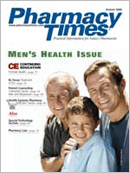Publication
Article
Pharmacy Times
RFID—Best Hope for Quashing Counterfeiting and Diversion
Author(s):
According to the FDA, counterfeitdrugs represented 10% of theglobal pharmaceutical market in2004. At the same time, while no hardfigures on drug theft exist, law enforcementreports an increased availability ofdiverted prescription drugs over the past3 years. That means a significant proportionof legitimate pharmaceuticalsare disappearing during the wholesalingprocess or once they reach the pharmacy.Unfortunately, it is hard to tell exactlywhat medicines are going where,because one pallet of pills looks more orless like every other. These alarmingfacts have spurred the federal governmentand the pharmaceutical industryinto action. In 2004, as part of its multilayeredapproach for combating counterfeiting,the FDA's Counterfeit DrugTask Force laid out a plan for implementingmass serialization of prescriptiondrugs in the United States. It recommendedthe unique identification ofevery pallet, case, and individual packageby 2007. The technology it anointedto accomplish this feat is radio-frequencyidentification, or RFID.
RFID has been implemented in hightechwarehouses in other industries forseveral years, but it is relatively new tothe pharmaceutical industry. To theuninitiated, an RFID tag might seem likea glorified bar code. It differs from a barcode, however, in 2 important respects.
A bar code contains informationabout the type of object in the package.It might tell you, for example, that avial contains insulin manufactured bya particular company. An RFID tag,though, is a tiny silicon microchip thatcarries a unique identifier: a serialnumber distinguishing that vial fromevery other vial in the world.
The second difference is that an RFIDtag does not need to be "swiped" with ascanner the way bar codes do. It is a passiveradio emitter, meaning that it emitsa signal but requires no batteries becauseit obtains its power from the signal of areading device. It can be scanned just bybeing within several meters of a reader. Avendor with an RFID reader could walkinto a room filled with pharmaceuticals,send out a scanning signal, and instantlyrecord the electronic product codes ofall the drugs in the room.
RFID, then, offers extremely accurateand fine-grained control over the whereaboutsof pharmaceuticals. Although theequipment and implementation costsare high (the readers currently costaround $2000), the technology promisesto pay for itself by making the handlingprocess much more efficient.
Purdue Pharma LP, Stamford, Conn,is an early adopter of RFID technology.Last November, it began placing RFIDtags on 100-tablet bottles of OxyContin(oxycodone HCl controlled-release)tablets shipped to 2 of its largest customers,Wal-Mart and H.D. Smith.
"Wal-Mart was the one who firstdeclared its intent to implement RFIDat various stages within its own organization," says Aaron Graham, PurduePharma's vice president and chief securityofficer. "They want RFID for allcases and pallets from their top 100vendors in 2005. But even in 2004,they wanted C-II-scheduled medications at the item level. Itwas quite an aggressive timeframe, but I thought it was wherethe industry should be. I applaud them for using their horsepowerto make it happen."
Other manufacturers are taking similar actions. New YorkCity-based Pfizer Inc plans to use RFID tags on all bottles ofViagra (sildenafil citrate) sold in the United States as soon aspossible in 2005. Meanwhile, GlaxoSmithKline, London, hassaid it will implement the technology on at least one of itsproducts within the next year.
Graham says RFID offers an opportunity to close the loopon drug distribution. "RFID, for the first time, gives the pharmaceuticalindustry the ability to partner with law enforcementand make a difference in pharmacy and supply chaintheft," he says. "For example, a trooper calls from Nebraskaand says he has a guy in the back of his car with 2 bottles ofOxyContin and wants to know where it came from. Before,we couldn't tell him. Even the lot number didn't help,because the lot might be 1000 bottles."
Now, he says, Purdue Pharma is donating handheld RFIDscanners to the FBI, FDA, and other law enforcement agenciesso they can scan bottles in the field and telephone the companywith the electronic product code. They will know theentire pedigree of the drugs immediately: where they weremanufactured, where they traveled, and what pharmacyreceived them.
"Now, for the first time ever, the police can arrest the personin their car for possession of stolen goods," he says. "In abetter scenario they can take that person back to the scene ofthe crime, get a positive ID, and make them for pharmacyrobbery."
The plan is not without its difficulties. Analysts estimatethat in order to handle RFID-tagged pharmaceuticals, theapproximately 34,000 chain-owned pharmacies in theUnited States will need to install 170,000 readers. The financialimpact may be especially heavy on small independentpharmacies. Many say that with increased demand, however,the price of the readers could fall by as much as 50%.
At any rate, pharmacies and wholesalers may have littlechoice in the matter. According to Graham, more than 30states have approved or are in the process of approving legislationthat will mandate better tracking of prescription drugs.RFID will be a necessary means of complying, whether or notit is explicitly specified in the new laws.
Graham sees the adoption of RFID as an advantageousmove for everyone from manufacturer to patient. "There arewholesalers and pharmacy chains in federal court todaybeing sued by patients who, unfortunately, received counterfeitdrugs," he says. "The litigation may prove to be moreexpensive than the technology. Where's your return oninvestment on that, and where's your goodwill to the patientand the industry? I think it behooves everybody to get on theright side of this issue."
Ms. Swedberg is a freelance medical writer.







